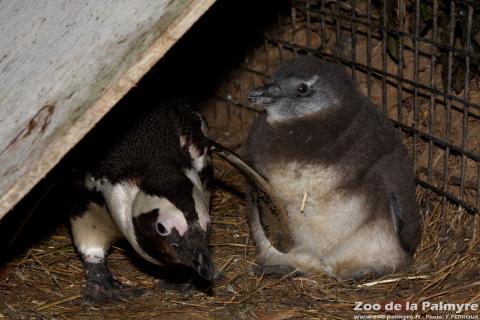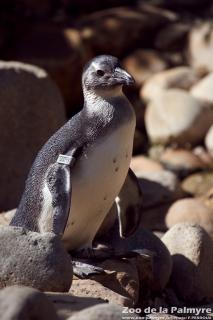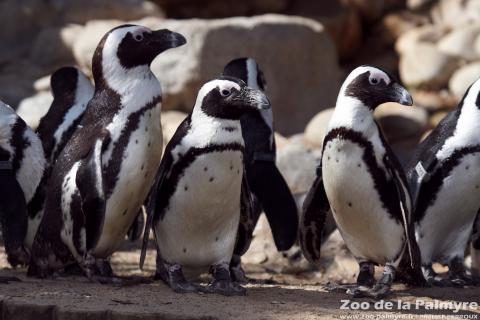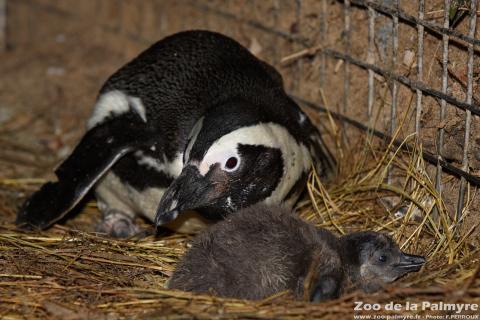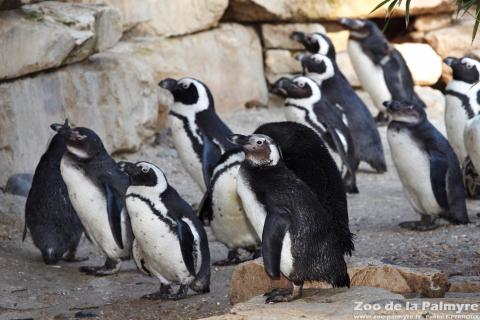Black-footed Penguin

Black-footed Penguin

-
Class
Aves -
Order
Sphenisciformes -
Familly
Spheniscidae
-
 60cm
60cm -
 3kg
3kg -
 40 days
40 days -
 2
2 -
 15–20 years
15–20 years
-
Diet
piscivorous (fish, squid) -
Habitat
coastal zones -
Range
South Africa, Namibia -
 This species is part of a European Breeding Program
This species is part of a European Breeding Program
-
Population in the wild
En diminution -
IUCN REDLIST status

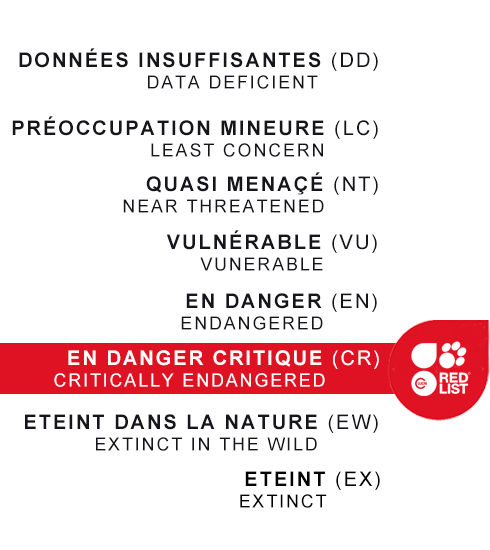
Black-footed Penguins are monogamous and tend to mate for life. They build their nests in a burrow or a hole under a bush, or under a rock, to protect the eggs from predators and high temperatures.
In the first month after the eggs hatch, the adults take it in turns to stay with the chicks to feed, protect and keep them warm enough. After that the parents go to sea together to find food, leaving the chicks in the ‘crèche’.
Chicks lose their down between the ages of 2 and 4 months. They are fed as long as they stay in the colony and as long as their parents aren’t moulting. When they have all their feathers, they go to sea for 1–2 years then return to their birth colony or to a new colony to breed. It’s at this point that they gain their adult plumage, although they continue to moult every year.
In the early years of the 21st century, there were no more than 150,000 Black-footed Penguins – less than 10% of the original population (estimated to have been 1.5 million in 1900). Today, only 52,000 mature Black-footed Penguins remain along the coasts of Namibia and South Africa.
In the first half of the 20th century, the dramatic decline in numbers was caused by the harvesting of eggs and guano (then used as fertiliser). The absence of this protective layer deprived penguins of their burrows, forcing them to nest in the open and making them more vulnerable to heat and predators.
Today the main threats to Black-footed Penguins are pollution (oil slicks and dumping), overfishing, which reduces the availability of food, and rivalry with sea-lions for breeding space and food. Certain diseases or parasites to which Black-footed Penguins are vulnerable can also cause a dramatic fall in numbers.
What are the differences between Black-footed Penguins and auks?
They are not part of the same family and, unlike Black-footed Penguins, auks can fly. Black-footed Penguins live in the southern hemisphere and auks in the northern hemisphere.

